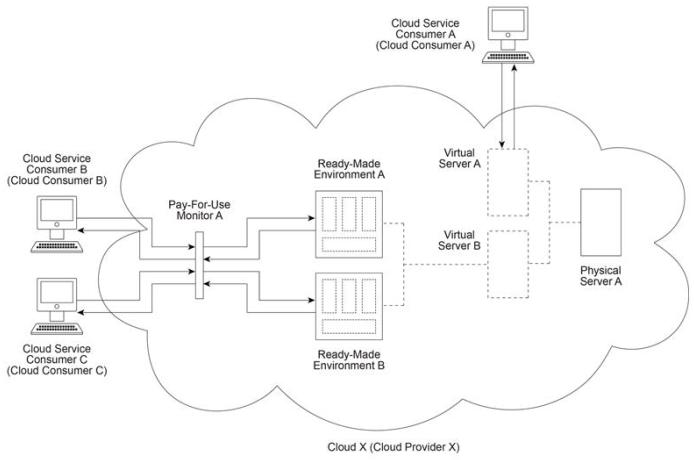Arcitura Education Exam C90.03 Topic 3 Question 19 Discussion
Topic #: 3
Cloud X (owned by Cloud Provider X) provides Physical Server A which hosts Virtual Servers A and B. Virtual Server B hosts Ready-Made Environments A and B. Cloud Service Consumer A uses Virtual Server A as part of an IaaS leasing agreement in which Cloud Consumer A is charged a fixed monthly fee for unlimited access. Cloud Service Consumers B and C use Ready-Made Environments A and B respectively as part of a PaaS leasing agreement based on per-minute usage fees. In both cases, access is monitored via Pay-For-Use Monitor A, which keeps track of log-in and log-out times in order to calculate the usage charges that are billed to Cloud Consumers B and C . Virtual Server A begins generating a series of exceptions. Soon thereafter, Virtual Server B becomes destabilized, resulting in further exceptions being raised in Ready-Made Environments A and B. Cloud Service Consumers B and C receive a series of error messages until both of their connections are dropped Finally, Physical Server A shuts down completely. A subsequent investigation reveals that Virtual Server A was the victim of a security attack performed by a malicious cloud service consumer, the attacker generated increased loads of external communication requests on Virtual Server A and the underlying network, causing Physical Server A (along with Virtual Server B) to eventually shut down.

Which of the following statements accurately identifies the type of security threat that corresponds to the described attack - and -provides a solution that can directly mitigate this type of security threat within Cloud X?
Currently there are no comments in this discussion, be the first to comment!